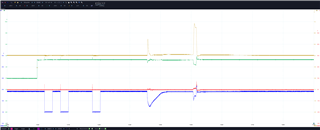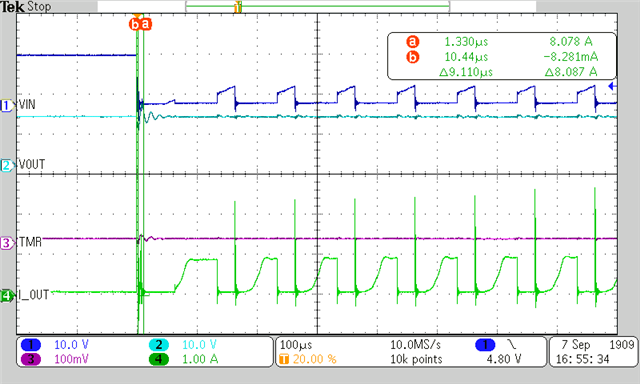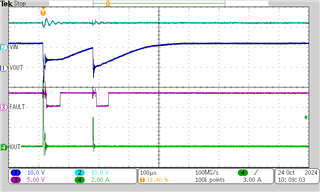Other Parts Discussed in Thread: TPS281C30, TPS281C100
Tool/software:
Hello
Is there some sort of minimum time between two consecutive short circuit events the TPS27S100 can recognize?
I have two very short short circuit events (~8µs) in my application, and for some reason the TPS27S100 only shuts down during the first one, but not the second one.
Here is an image of the short circuit events. Yellow is the output voltage of an H-bridge driven by the TPS27S100, cyan is my input voltage.
As you can see during the first short circuit the TPS27S100 switches the output off immediately as expected, therefor my input voltage does not drop at all.
During the second short circuit however the TPS27S100 does not switch off... Sadly I can't show measured currents with my scope at home, but I've used a current clamp yesterday in the office and the currents far exceed the set ILIM value of 0.5A. At one point I measured like ~8A or something...
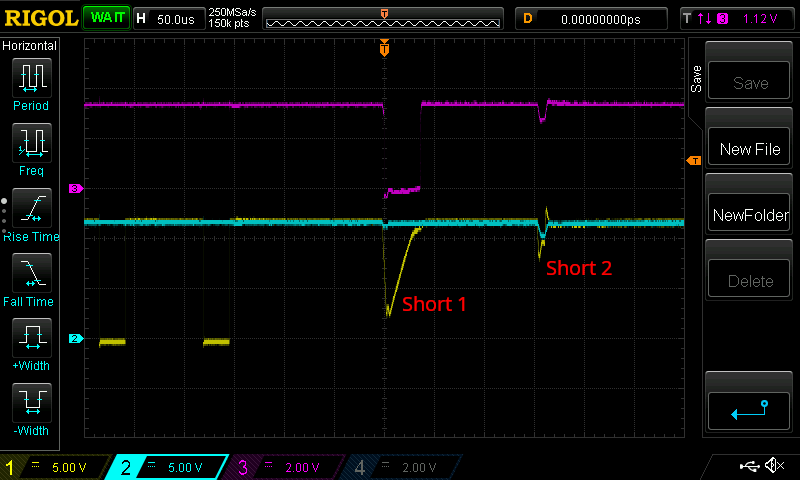
My application has the ILIM setting adjustable, but for that oscilloscope picture above I've used the 0.5A setting. The small transistor circuit below the TPS27S100 produces a digital signal whenever there is a large enough voltage drop between VIN and Vdrive. This voltage drop is what's causing the negative pulse of the magenta signal.
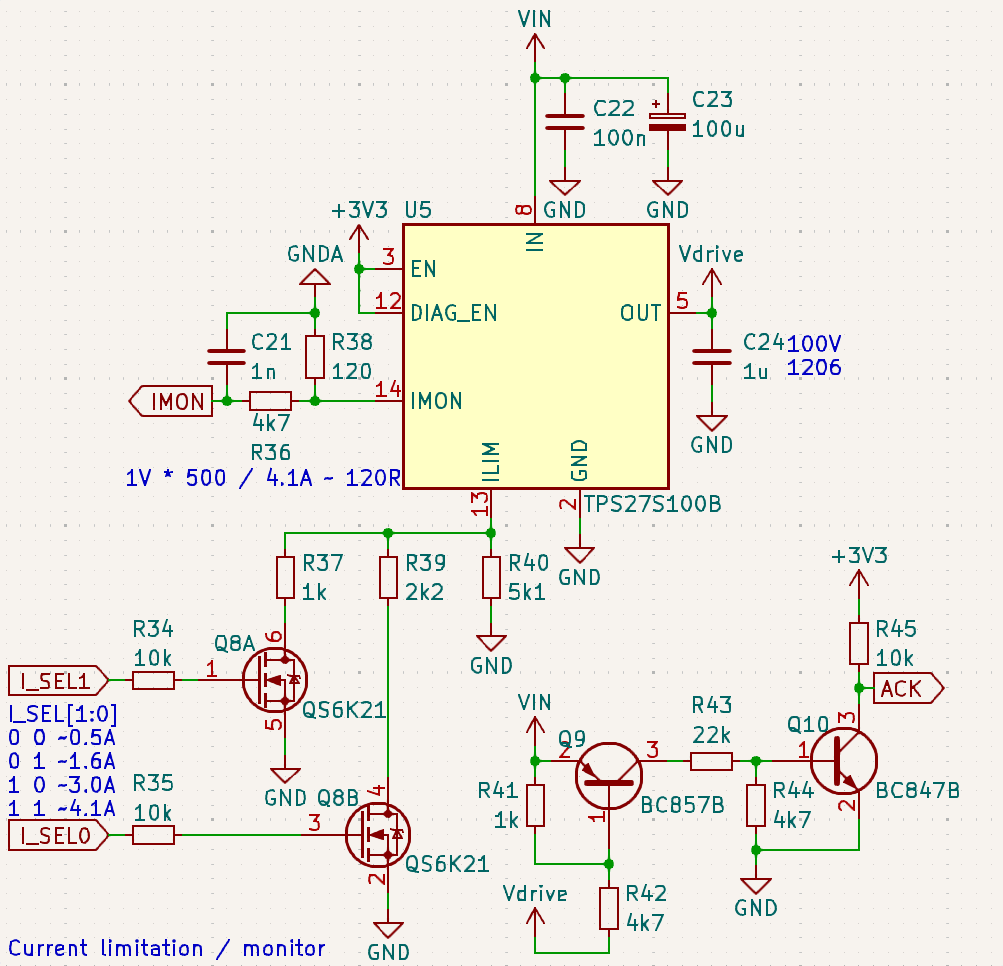
Oh and btw, the spice model does not show this behavior. When simulating my circuit everything worked fine...


